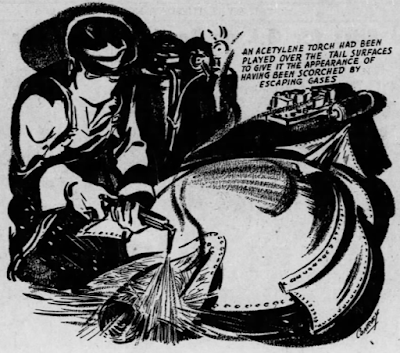Louis Taylor recently left a series of interesting comments on The
Saucers That Time Forgot, and it prompted us to check his Blogger profile which
links to his Pinterest page. It’s called "Information Dispersal," where
Luis hosts an interesting collection of various UFO correspondence, documents, and photos,
mostly from the 1960s. The
correspondence covers letters between ufologists such as Steve McNallen, Tom Adams, Anthony Kimery, Ed Biebel,
John Keel, Bill Moore and others.
When we contacted him, Louis told us a little about his UFO projects:
"I've been working on a couple of books and doing research into all manner of details concerning the phenomenon including those you've covered on your blog. Been looking into the concurrent evolution of the anti-communist right and UFOlogy in the 20th century as well as the GOC (Ground Observer Corps) and other things like accumulating sighting catalogs of UFOs around transmitters as well as ringing hull cases."
Louis has been building an archive of vintage material
from various sources, including items offered for sale on eBay. Unfortunately,
many of these come without any data about their date or origin.
At his page, Louis
has a collection of photos labelled, “Orphaned UFO Images,” and asks: “Have you seen me? I was created many years ago but I don't
know by whom. Any information as to the true source of the following images
would be greatly appreciated.”
I asked him if we could share some of his UFO pictures
at STTF.
“That would certainly
be fine by me. The whole point of posting them is to try and get any
information that might be available that might further identify them.”
Louis also shared a
collection of images, some of which will be used in later articles. There’s
some press material from the 1967 direct to television movie, Mars Need Women.
We found info on this movie still from "Flying Saucer," it’s from an English dubbed version of the Italian film, "Il Disco Volante."
The last photo is the most mysterious, a 1947 photo shot from a plane with what looks like a snowy mounting in the background, and above it a flying spherical object.
The photo is a print used for an unknown newspaper’s story, and on the back is a pasted a clipping of the published caption:
An object flying over Mount McKinley in Alaska which three Fairbanks girls believed to be a “flying disk” was recorded on film by the trio during a Fourth of July vacation flight near the mountain. The girls, Margaret Hawk, Mary Lou Hawkes, and Julie Harris, say they had focused their camera on the peak when a “bright red mass” went flying through space leaving a gaseous trail. What they saw is shown in this picture to the right of the peak's crest. The “disk” was visible only a second, they said, and then disappeared into the mist.
[stamped] JUL 15, 1947
Louis Taylor notes the print had been retouched, a common practice to sharpen details for newsprint publication. He said:
“From the look of it it actually looks like a frame from a home movie or something. It's obviously been retouched but what is it, a Perseid meteor or something else?”
So far, we have been unable to find the published version. This is an outstanding find, and would be in the running with the Frank Ryman picture for the first UFO photo of the flying saucer era.























































